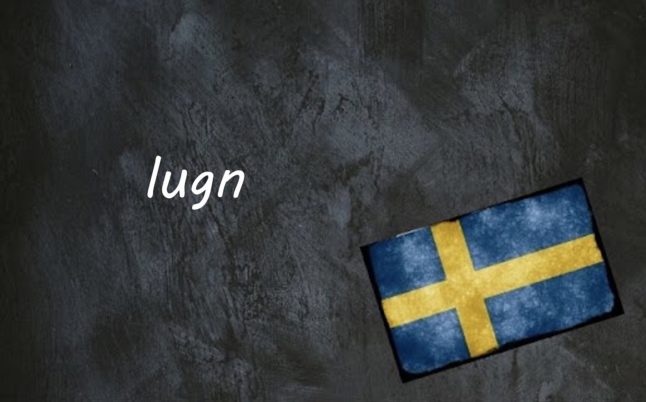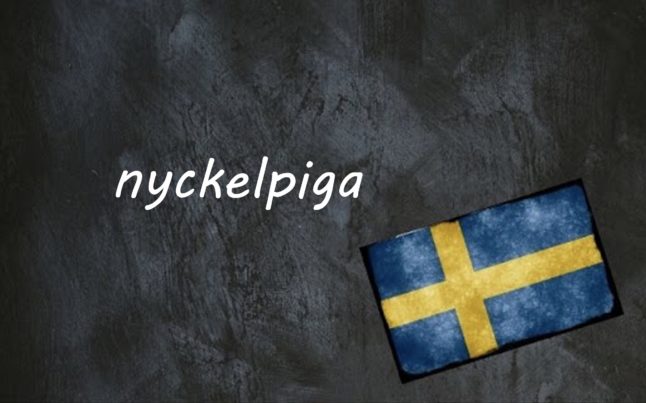Lugn means ‘calm’, ‘tranquil’, ‘serene’ or ‘relaxed’. You can use it to describe something’s permanent state or a temporary condition: for example, if you say det är en lugn gata (it’s a calm/quiet street), it means that it is street where there’s never much noise or traffic, but if you say gatan var lugn (the street was quiet), that just refers to a particular point in time.
When you describe a person, the tense used changes the meaning of lugn even more. If you say han var lugn (he was calm), this can mean ‘calm’, ‘unperturbed’, ‘unworried’, ‘unbothered’ or ‘relaxed’, and you’d usually be describing the person’s state in reaction to a specific incident. But if you say something like han är en lugn person (he is a calm person), it’s a reference to temperament, implying that nothing ever really bothers him, or describing someone who is cool-headed and rational.
Lugn can also be used as a noun (it’s an ett word), in which case it means ‘the tranquility/calmness’. For example: till slut kom lugnet (in the end, all was calm). And it can be transformed into an adverb, lugnt, which you’ll often hear in the phrase ta det lugnt! (take it easy).
- Don’t miss any of our Swedish words and expressions of the day by downloading The Local’s new app (available on Apple and Android) and then selecting the Swedish Word of the Day in your Notification options via the User button
The word lugn existed in Old Swedish, when it was also sometimes spelled lygn, and at that point it referred specifically to the calm, still surface of a lake. Today’s Swedish no longer has a specific word to describe this, but lugn still works in that context. And this word actually shares an etymology with the word ‘lagoon’, referring to a shallow body of water which usually has a calm surface due to its depth and isolation.
You can also use the verb lugna (to calm, to quieten), which most often appears in the phrase lugna ner (to calm/quieten down). For example: du måste lugna ner hunden (you need to calm the dog down); när han lugnar ner sig ska han kunna sova (when he calms down he’ll be able to sleep).
In the first example, lugna ner is as a transitive verb, which means it requires a grammatical object: in the first example above, the subject is du (you), which is doing the action of calming to the object, hunden (the dog). The second example uses a reflexive verb, which means the subject and the object are the same; the object (han) is doing the calming to himself (sig).
Example sentences
Tekniker som meditation kan ge lugn även i en stressig miljö.
Techniques like meditation can bring calm even to stressful environments.
Jag får aldrig en lugn stund!
I never get a moment of peace!



 Please whitelist us to continue reading.
Please whitelist us to continue reading.
I enjoy these articles about word of the day, nut as a non Swedish speaker it would really help to have pronunciation